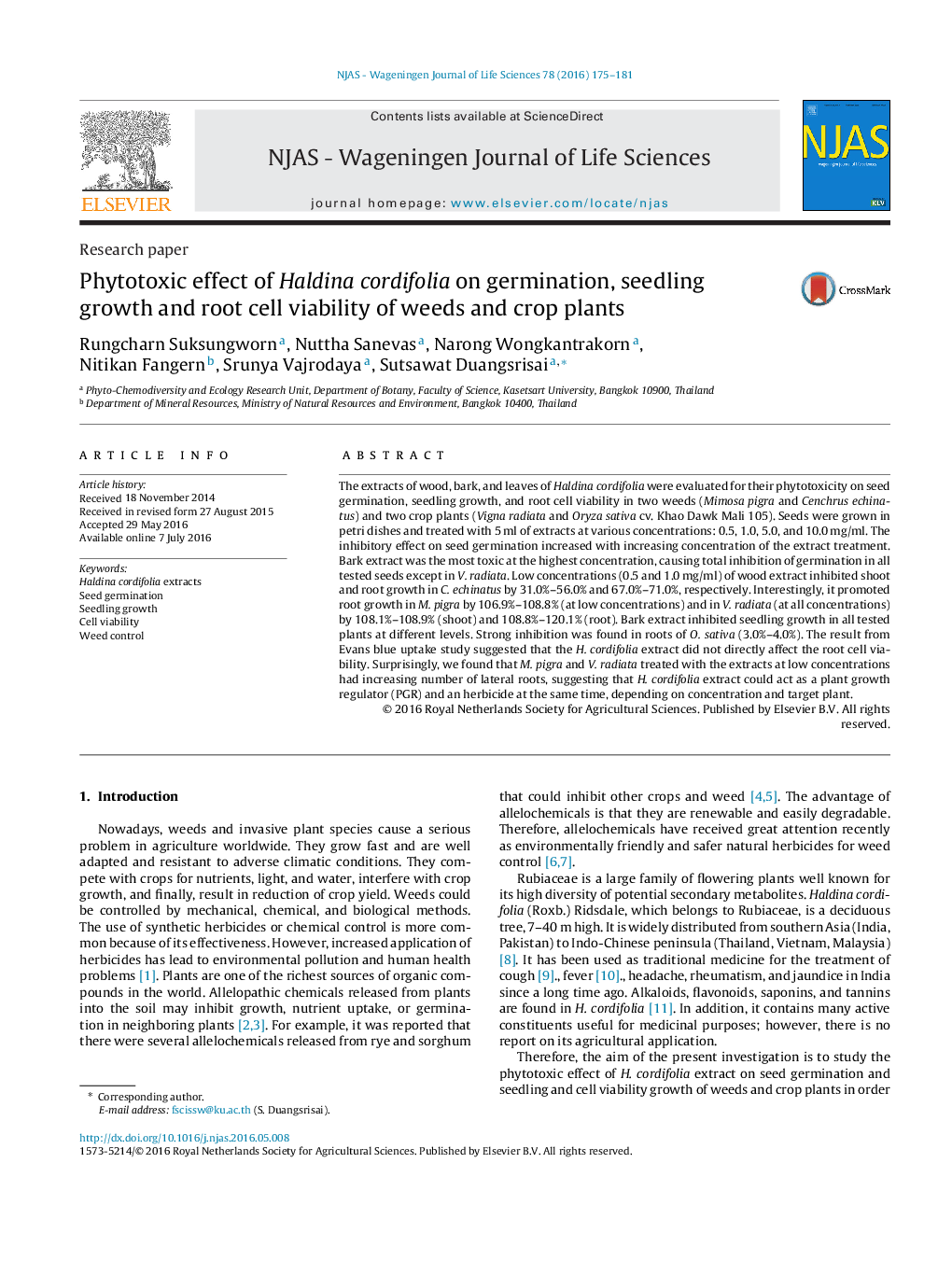| کد مقاله | کد نشریه | سال انتشار | مقاله انگلیسی | نسخه تمام متن |
|---|---|---|---|---|
| 6372256 | 1624059 | 2016 | 7 صفحه PDF | دانلود رایگان |
- The extracts from different parts of Haldina cordifolia showed phytotoxic effect on germination and growth of weeds (southern sandbur and giant mimosa) and crop plants (rice and mung bean).
- Bark extract showed the greatest inhibitory effect. Wood and leaf extracts seemed to have stimulatory effect at low concentrations but have inhibitory effect at high concentrations with some tested species.
- It is suggested that this extract could be used as natural herbicide or plant growth stimulator, depending on the species of target plant and the concentration of the extract.
The extracts of wood, bark, and leaves of Haldina cordifolia were evaluated for their phytotoxicity on seed germination, seedling growth, and root cell viability in two weeds (Mimosa pigra and Cenchrus echinatus) and two crop plants (Vigna radiata and Oryza sativa cv. Khao Dawk Mali 105). Seeds were grown in petri dishes and treated with 5Â ml of extracts at various concentrations: 0.5, 1.0, 5.0, and 10.0Â mg/ml. The inhibitory effect on seed germination increased with increasing concentration of the extract treatment. Bark extract was the most toxic at the highest concentration, causing total inhibition of germination in all tested seeds except in V. radiata. Low concentrations (0.5 and 1.0Â mg/ml) of wood extract inhibited shoot and root growth in C. echinatus by 31.0%-56.0% and 67.0%-71.0%, respectively. Interestingly, it promoted root growth in M. pigra by 106.9%-108.8% (at low concentrations) and in V. radiata (at all concentrations) by 108.1%-108.9% (shoot) and 108.8%-120.1% (root). Bark extract inhibited seedling growth in all tested plants at different levels. Strong inhibition was found in roots of O. sativa (3.0%-4.0%). The result from Evans blue uptake study suggested that the H. cordifolia extract did not directly affect the root cell viability. Surprisingly, we found that M. pigra and V. radiata treated with the extracts at low concentrations had increasing number of lateral roots, suggesting that H. cordifolia extract could act as a plant growth regulator (PGR) and an herbicide at the same time, depending on concentration and target plant.
Journal: NJAS - Wageningen Journal of Life Sciences - Volume 78, September 2016, Pages 175-181
